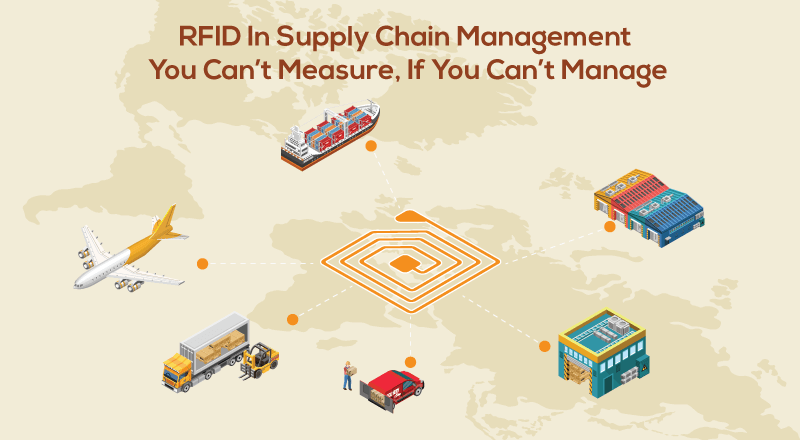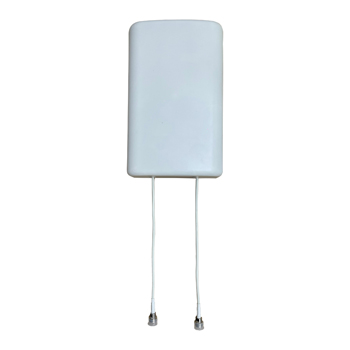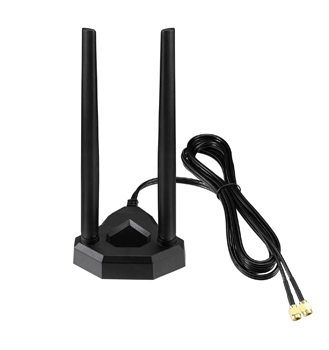
Businesses have been utilizing RFID technology for decades. However, this technology has recently emerged as the go-to option for supply chains looking to increase productivity, increase visibility, and produce better overall outcomes. Because information is readily available thanks to RFID technology, making crucial decisions concerning inventories and the company as a whole is also made simpler.
Table of Contents
ToggleWhat is RFID?
In today’s supply chain, radio frequency identification (RFID) is a crucial element. Radio waves are used by this wireless technology to collect and transmit crucial data. While barcodes and RFID tags share certain fundamental similarities, such as the capacity to store and transmit data in a compact, highly adaptable format, their differences are important to understand, particularly as they apply to the supply chain and logistics.
Perhaps most importantly, barcodes need a clean line of sight to operate at their best. However, radio waves, which are used by RFID, can still transmit data even if there is no line of sight. RFID technology also has a tendency to handle huge numbers of tags and significant amounts of data more efficiently.
Using radio waves, radio-frequency identification (RFID) reads and records data from a tag that is affixed to an object. A tag does not need to be in the reader’s direct line of sight in order to be read from up to several feet away. For instance, you don’t need to worry about where the RFID reader should be placed in the warehouse to scan several items; you just need to set them all next to it. Unlike barcodes, which save a ton of time and energy, RFID can scan several objects at once, which is its most significant advantage.
RFID throughout the many stages of supply chain management
RFID technologies are used in industries as diverse as e-commerce and healthcare. They are crucial for everything from decision-making to inventory monitoring and delivery.
Within its most important categories—integration, operations, purchasing, and distribution—the contemporary supply chain offers a wide range of options to use RFID. We go into detail about each supply chain phase below (and its potential for RFID application).
Integration
The supply chain’s efficiency in today’s fast-paced market depends on how well the communication flows that support it. To guarantee efficient operation across all settings and stages, accurate, current information must be transmitted right away to suppliers, warehouses, and transportation companies.
By quickly capturing vital information about resources and products in transit, RFID tags facilitate effective integration. The right supply chain partners and other parties can then act on this data as necessary thanks to well-built RFID solutions.
What can Tesswave do for you?
Tesswave provide 100+ antenna products and you can contact us for antenna customized solutions, get in touch with us today to get a Free quote.
Get an Instant Quote
Get a FREE quote and we will contact you within an hour
Operations and Purchases
How effective the supply chain can be, and ultimately how profitable it may be, is greatly influenced by daily operations. However, it could be challenging to follow this. This problem is solved by RFID systems by giving real-time information on routine processes. These tools can precisely identify bottleneck locations. Such problems have the potential to create significant delays if they are not quickly discovered and resolved.
RFID assists in tracking the flow of both raw and semi-finished products during the supply chain’s purchasing phase. It is simpler to ascertain the status of shipments when using RFID technologies. Reducing holdups and other delays during the receiving stage streamlines other warehouse management activities.
RFID is essential for making the most of the storage space in warehouses. These systems’ data collection can help to minimize the possibility of inventory loss at warehouse locations while ensuring that all products are kept and retrieved as effectively as feasible. Real-time data also increases picking and inventory accuracy, which is crucial given the high costs associated with even small error rates.
Logistics and Distribution
RFID systems have many benefits for the distribution process as goods migrate from the point of origin to their final destinations. Distributors may experience a number of unforeseen problems at this phase, posing the risk of expensive delays and a cascade of inefficiency. RFID solutions make it easier to address these problems.
A prime example? Is road and weather conditions. Even the most effective operations are in danger of failing due to these. No amount of preparation will ensure that shipments stay on schedule unless real-time information can be used to create immediate backup plans. As was already noted, data collected with the aid of RFID can also enable tracking, which can lead to quicker remedies for problems like tampering.
RFID solutions are just as essential for ensuring that operations continue to go along at the right rate in warehouses and distribution centers. These automated solutions offer a practical way to increase earnings by increasing efficiency. Additionally, improved supply chain visibility encourages higher accuracy. This is crucial in today’s cutthroat market since both firms and customers are so exacting that there is little space for error.
Using Radio-Frequency Identification (RFID), we can automatically locate and monitor items. The majority of versions include radio signals being sent and received between a label and an optical scanner or reader. In order to give real-time tracking and total control, this data is also simultaneously transmitted from the cloud to the various distribution systems.
Finishing it off
This article aims to provide you with a thorough understanding of how RFID affects supply chains and logistics operations. You should integrate the technology into your logistics company as soon as possible because it has a bright future. Use RFID to streamline and benefit from your supply chain management and logistics operations.
In the supply chain, automation and the use of RFID may render humans obsolete if technology keeps developing. Over the past ten years, both technologies have been included in the supply chain, which has significantly changed both performance and costs. While automation is a technique that may move products between facilities, RFID can significantly increase efficiency and is the main force behind the removal of human involvement in the supply chain.
Frequently Asked Questions RFID
Is RFID harmful to humans?
It is well acknowledged that humans can safely use RFID. The majority of human harm that RFID technology causes are connected to privacy infringement and security issues raised by RFID skimming. Radio frequencies are used in RFID technology to identify, track, and communicate data. RFID radio waves are thought to be harmless and non-toxic to both people and animals.
When utilized for purposes like animal tracking, inventory management, product tracking, identification, etc., The radio frequencies employed by RFID devices do not have enough energy to damage people.








